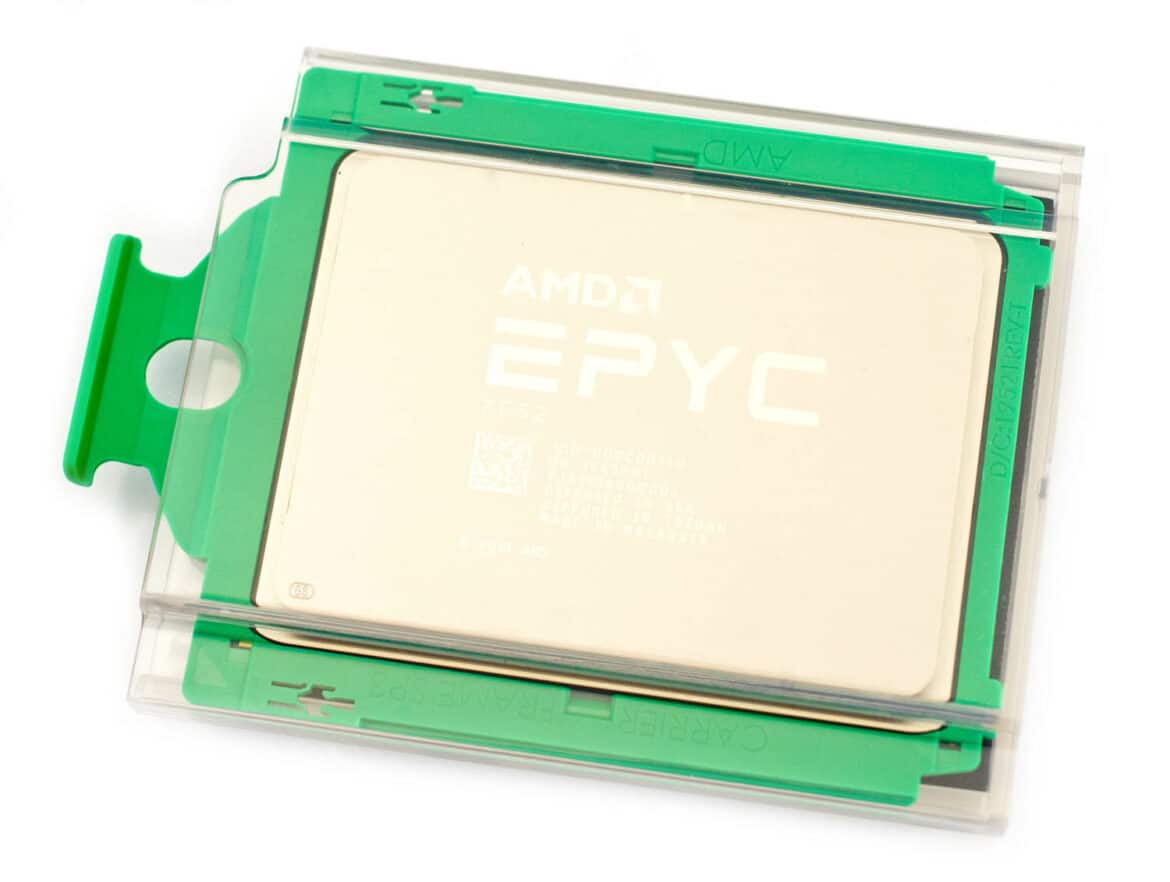Today AMD rolled out more CPUs in their second generation AMD EPYC line. The new CPUs are the AMD EPYC 7Fx2 family that includes the 7F32, 7F72, and the one we are looking at in this review, the AMD EPYC 7F52. This isn’t a major new family release, the 7Fx2 CPUs are designed to close out gaps in the AMD server portfolio. AMD is putting out three high-clock speed CPUs for specific use cases; something many customers will be happy to leverage.
Today AMD rolled out more CPUs in their second generation AMD EPYC line. The new CPUs are the AMD EPYC 7Fx2 family that includes the 7F32, 7F72, and the one we are looking at in this review, the AMD EPYC 7F52. This isn’t a major new family release, the 7Fx2 CPUs are designed to close out gaps in the AMD server portfolio. AMD is putting out three high-clock speed CPUs for specific use cases; something many customers will be happy to leverage.
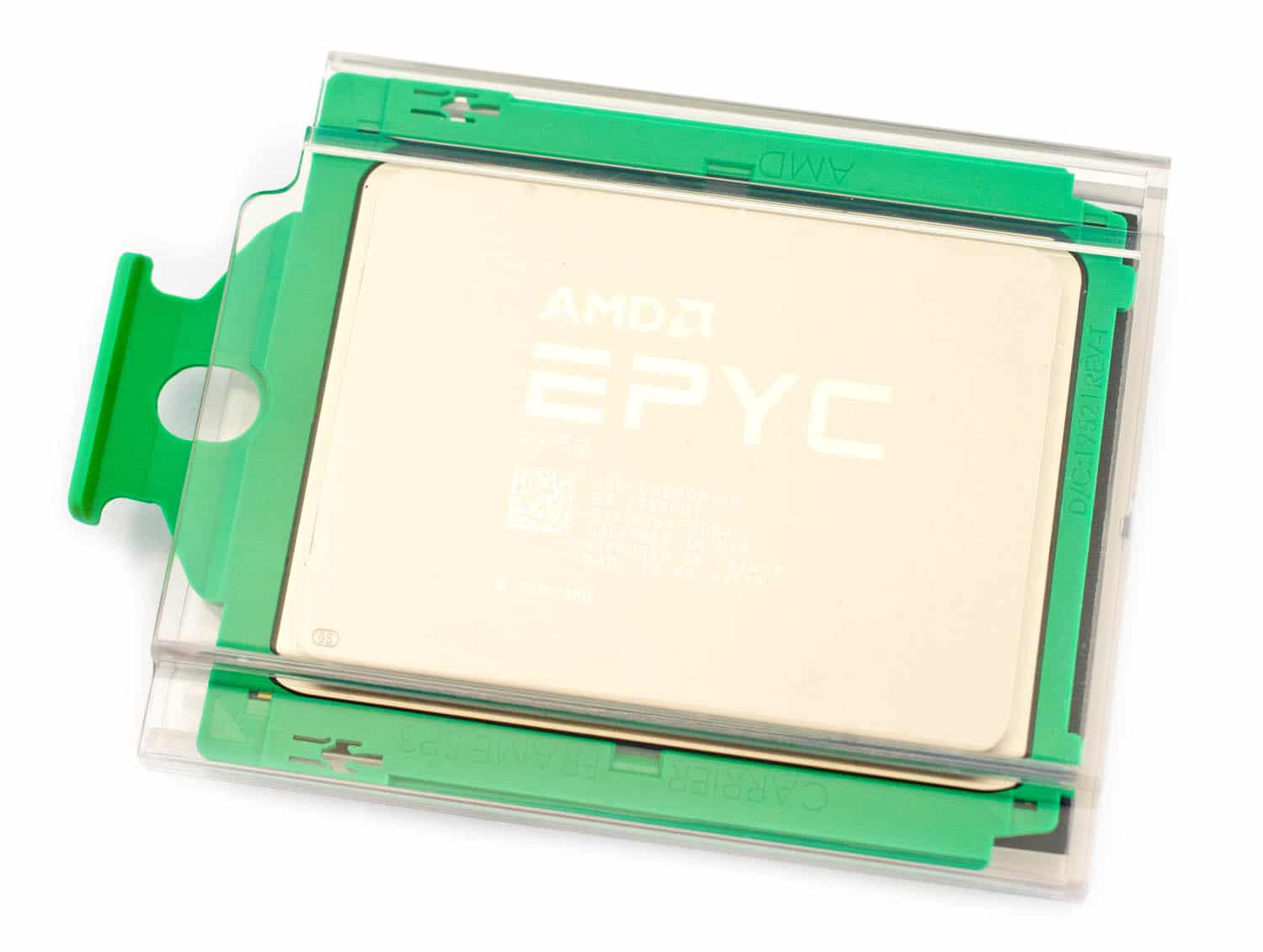
As a quick recap, the AMD EPYC generation 2 processors cap come with much higher core counts than Intel CPUs, enable servers (with the correct motherboard) to support PCIe 4.0, and they support faster speed DRAM. All of these translates into faster performance in several ways and has caused some software vendors to reshape how they license servers on sockets versus cores. Another selling point here is the price. Typically speaking, an AMD EPYC platform can hit the same performance as a second gen Intel Xeon Scalable for a much lower price.
AMD came out of the gate with about 20 CPUs that hit a variety of needs in both single and dual proc configurations. While they started with a lot of options, there were plenty of holes in that dike, and AMD has been plugging this with new CPUs here and there. Today sees more of this with frequencies up to 3.9GHz. AMD claims that this is ideal for workloads such as HCI, HPC, and relational databases. This could be used as a way to side-step the core tax from VMware and still get plenty of performance. Basically any memory hungry workloads where high end enterprise gear is not needed overall. The AMD 7F52 we are going to review can have a maximum of 4TB of DRAM.
Here is a video review:
The AMD EPYC 7F52 CPU is out now for a price of $3,100 each, but there is no doubt some sort of deal if bought in bulk.
AMD EPYC 7Fx2 CPU Specifications
| Processor | Cores/Threads | TDP (Watts) | Base Freq/Max Boost Freq | Total L3 Cache | L3 Cache per Core | Price (1Ku) |
| 7F32 | 8/16 | 180W | 3.7 GHz/~3.9 GHz | 128MB | 16MB | $2,100 |
| 7F52 | 16/32 | 240W | 3.5 GHz/~3.9 GHz | 256MB | 16MB | $3,100 |
| 7F72 | 24/48 | 240W | 3.2 GHz/~3.7 GHz | 192MB | 8MB | $2,450 |
Performance
In order to test the performance of the new CPU, we leveraged a GIGABYTE R272-Z92 Server and compared the AMD EPYC 7F52 to the AMD EPYC 7302P. This makes it a good single proc to single proc/16 core to 16 core review with the rest of the hardware being the same.
SQL Server Performance
StorageReview’s Microsoft SQL Server OLTP testing protocol employs the current draft of the Transaction Processing Performance Council’s Benchmark C (TPC-C), an online transaction processing benchmark that simulates the activities found in complex application environments. The TPC-C benchmark comes closer than synthetic performance benchmarks to gauging the performance strengths and bottlenecks of storage infrastructure in database environments.
Each SQL Server VM is configured with two vDisks: 100GB volume for boot and a 500GB volume for the database and log files. From a system resource perspective, we configured each VM with 8 vCPUs, 64GB of DRAM and leveraged the LSI Logic SAS SCSI controller. While our Sysbench workload saturates the platform in both storage I/O and capacity, the SQL test looks for latency performance.
This test uses SQL Server 2014 running on Windows Server 2012 R2 guest VMs, and is stressed by Quest Software’s Benchmark Factory for Databases. While our traditional usage of this benchmark has been to test large 3,000-scale databases on local or shared storage, in this iteration we focus on spreading out four 1,500-scale databases evenly across our servers.
SQL Server Testing Configuration (per VM)
- Windows Server 2012 R2
- Storage Footprint: 600GB allocated, 500GB used
- SQL Server 2014
-
- Database Size: 1,500 scale
- Virtual Client Load: 15,000
- RAM Buffer: 48GB
- Test Length: 3 hours
- 2.5 hours preconditioning
- 30 minutes sample period
In SQL Sever Transactional the 7F52 was slightly better with aggregate scores being 12,641.8 TPS to the 7302P’s 12638 TPS.

Again just a slight advantage in SQL Server average latency with an aggregate score of 3ms to 3.5ms.

Sysbench MySQL Performance
Our Percona MySQL OLTP database measured via SysBench. This test measures average TPS (Transactions Per Second), average latency, and average 99th percentile latency as well.
Each Sysbench VM is configured with three vDisks: one for boot (~92GB), one with the pre-built database (~447GB), and the third for the database under test (270GB). From a system resource perspective, we configured each VM with 4 vCPUs, 60GB of DRAM and leveraged the LSI Logic SAS SCSI controller.
Sysbench Testing Configuration (per VM)
- CentOS 6.3 64-bit
- Percona XtraDB 5.5.30-rel30.1
-
- Database Tables: 100
- Database Size: 10,000,000
- Database Threads: 32
- RAM Buffer: 24GB
- Test Length: 3 hours
- 2 hours preconditioning 32 threads
- 1 hour 32 threads
For Sysbench we saw the 7F52 continue to edge out the 7302P with 9,266 TPS to 8,804 TPS
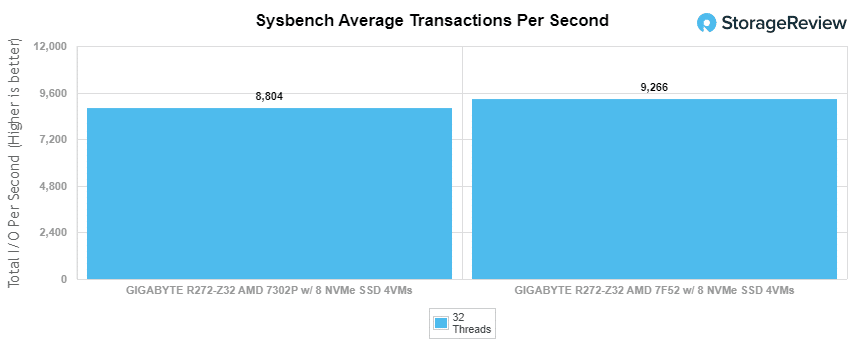
Sysbench average latency had the 7F52 with a latency 27.62ms compared to the 7302P’s 29.08ms.
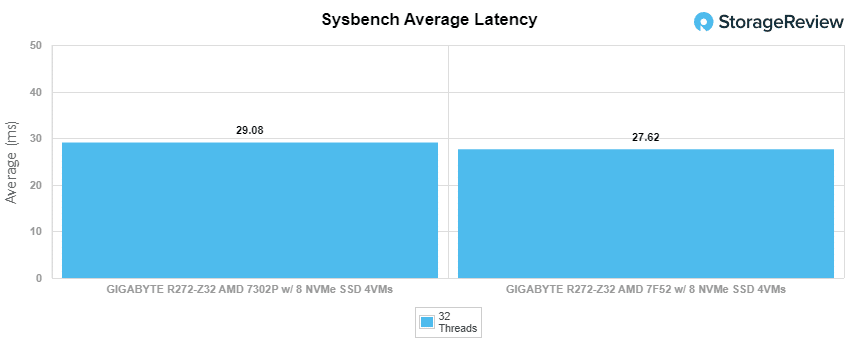
In our worst-case scenario (99th percentile) latency we saw scores of 101.43ms for the 7F52 and 79.16ms for the 7302P.
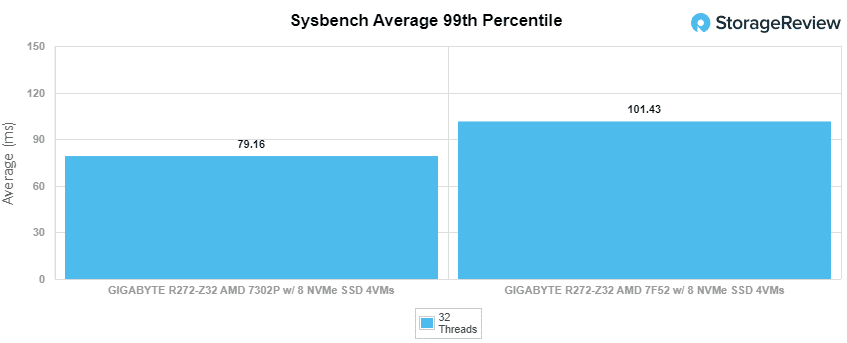
Conclusion
AMD continues to fill the gaps in its EPYC line to hit different customer needs. The new AMD 7Fx2 series that came out today are all about high frequencies at low core counts with more L3 cache. Users can add lots of memory to their workloads and keep the core count in a VMware friendly space. This is all done at a nice price point so it makes it double attractive when customers are building out their HCI infrastructure. HPC users can see a performance boost versus competing CPUs.
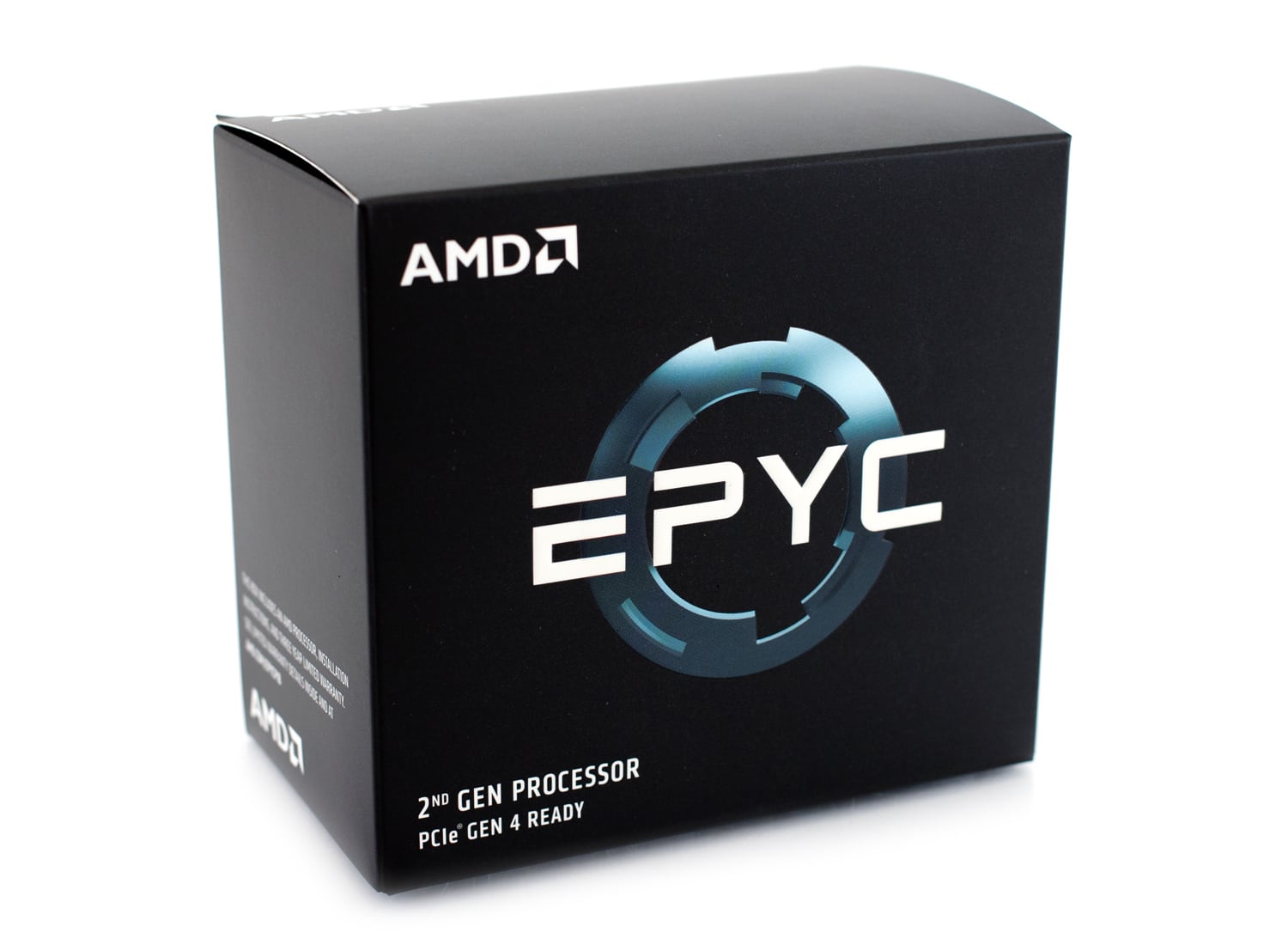
For our review we looked at the AMD EPYC 7F52 in a GIGABYTE R272-Z92 NVMe Server in our Application Workload Analysis benchmarks. For the most part (four out of five benchmarks) the news 7F52 outperformed the 7302P. The new CPU hit SQL Server scores of 12,641.8 TPS with an average latency of 3ms. For Sysbench it saw 9,266 TPS, an average latency of 27.62ms, and the only test it didn’t best the 7302P in, the worst-case scenario, we saw a latency of 101.43ms.
The AMD EPYC 7F52 processor is ideal for the midrange use cases that need a lot of memory and clock speed but not everything else that comes with the higher end CPUs from AMD. The new AMD EPYC 7Fx2 series also lets users leverage VMware at a higher performance profile than the existing 16-core AMD offering.
Engage with StorageReview
Newsletter | YouTube | Podcast iTunes/Spotify | Instagram | Twitter | Facebook | RSS Feed

